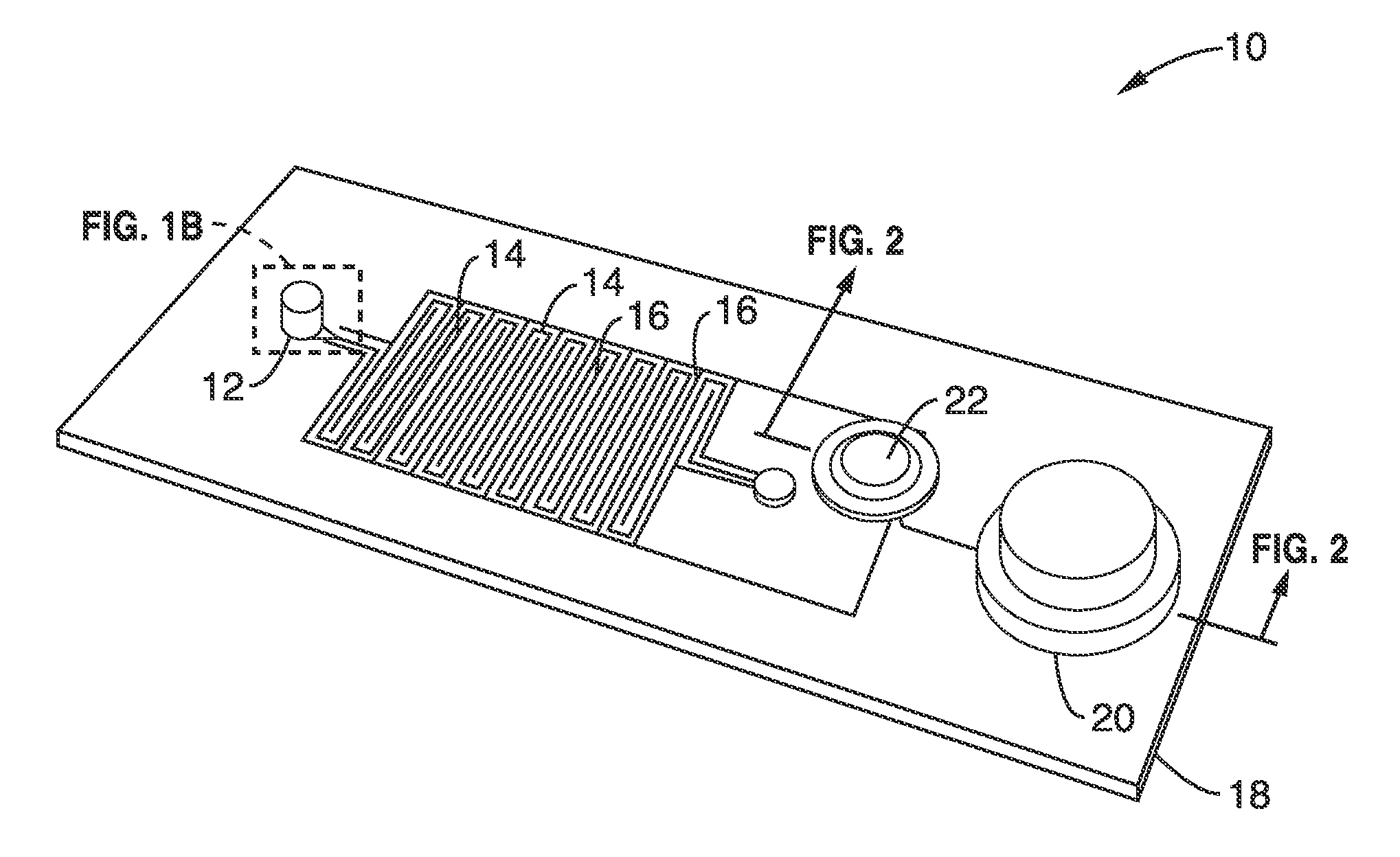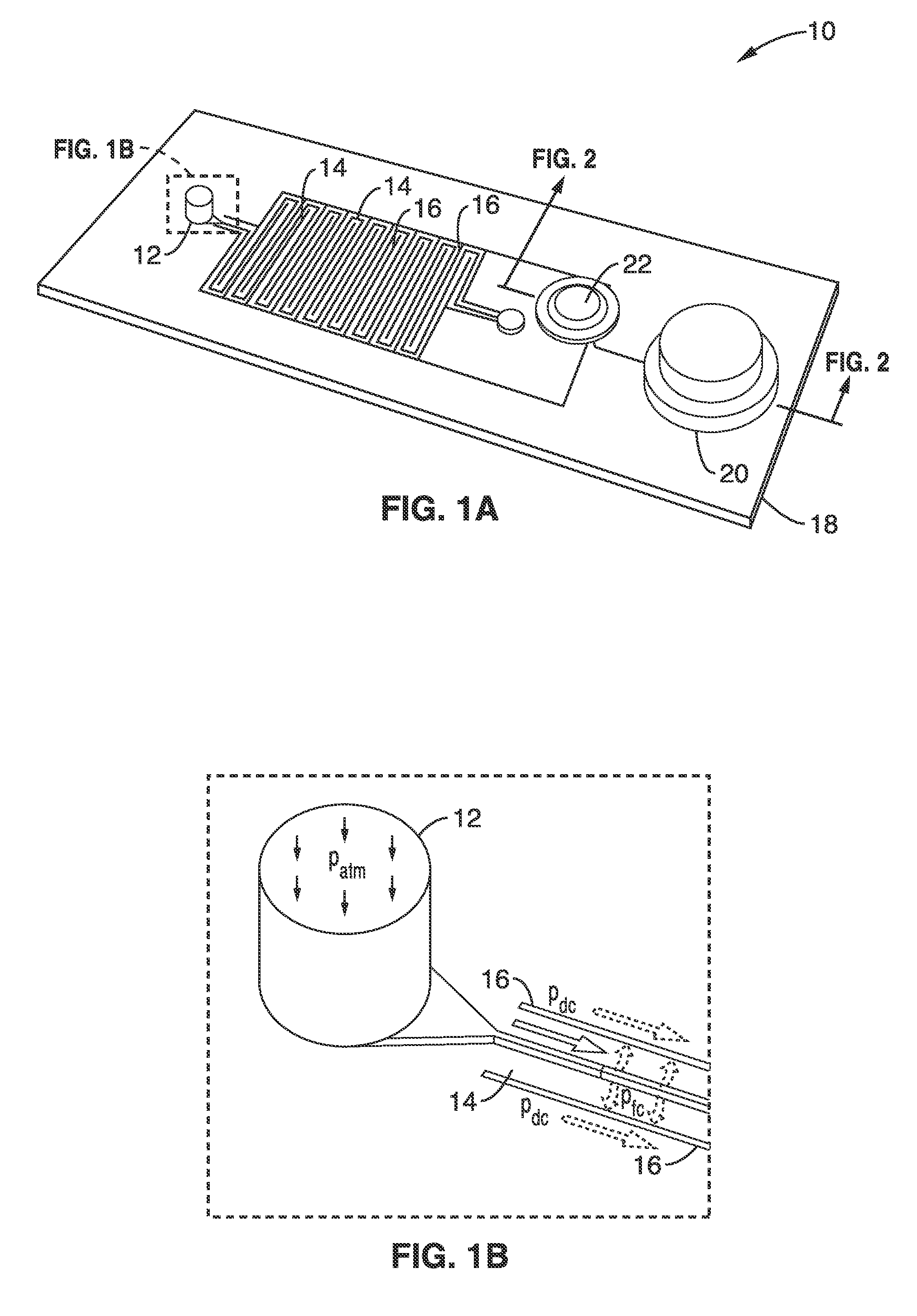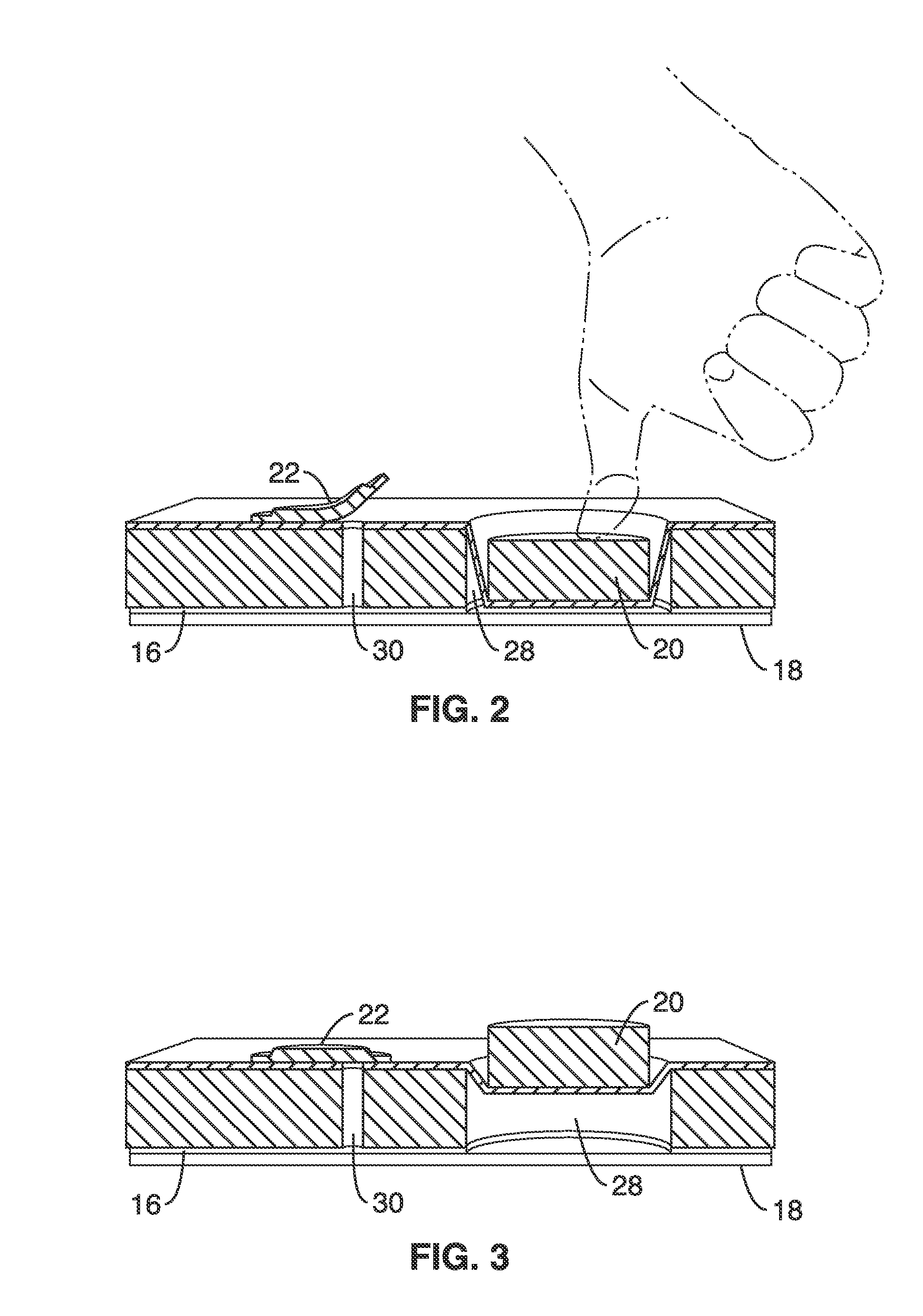Proximal degas driven microfluidic actuation
a microfluidic and actuation device technology, applied in the direction of positive displacement liquid engine, laboratory glassware, instruments, etc., can solve the problems of inability to inability to use control and complicated flow patterns, and inability to achieve controlled and complicated flow patterns. , to achieve the effect of reducing the number of dead-volume in the pumping apparatus, reducing the oscillation of fluid flow velocity, and eliminating any dead-volume within the pumping apparatus
- Summary
- Abstract
- Description
- Claims
- Application Information
AI Technical Summary
Benefits of technology
Problems solved by technology
Method used
Image
Examples
example 1
[0083]In order to demonstrate the operational principles of the apparatus and methods, simulations were performed to validate the theoretical models, and to understand the effect of various design parameters on fluid actuation and to determine the specific correlations between the key parameters. Two different types of simulations were performed: 1) an investigation into how different parameters influence fluid flow assuming constant pressure in the degassing channel network; and 2) an analysis of different thumb-pump parameters for the comparison of pressures obtainable within the degas channel network using the schematic structure shown in FIG. 5.
[0084]Based on the theoretical model using the schematic structure shown in FIG. 4, the three main parameters that were varied for the characterization study were the barrier thickness d, the fluidic channel width w, and the applied negative pressure in the degas channel network Pd. For the simulations, the total fluidic channel length wa...
example 2
[0096]Many options exist for the source of reduced pressure which can be used for the device. For the initial characterizations a vacuum pump (with a bleed valve) was used to apply a measured and controlled vacuum pressure. This technique is ill suited for point of care testing applications and therefore a standalone device using an integrated membrane thumb-pump as the vacuum source was designed and simulated.
[0097]Simulations were performed that coupled fluidic actuation with an integrated on-chip finger operated membrane pump as shown schematically in FIG. 1C and FIG. 3. The membrane deflection pushes air out of a one-way air valve and its subsequent relaxation pulls out air from the degas lines generating a vacuum in the channels.
[0098]The diameter of thumb-pump chamber and the thickness of the silicone membrane were two parameters that were varied for the integrated thumb-pump structure simulations. The simulated thumb-pump chamber height was 4 mm, membrane thickness was 0.81 m...
example 3
[0100]The experimental validation of the simulations of Example 1 was done by the simultaneous measurement of pressure and fluid momentum in a dead end channel. Devices were fabricated using standard soft lithography processes. Multiple parameters were considered such as the distance between the degas channel network and the fluidic channel network (i.e. proximity), the channel width, and the relative vacuum pressure in the degas channel network. Thumb-pump simulations were also validated experimentally.
[0101]Devices with structures with different barrier layer thicknesses, channel widths and channel lengths were fabricated. To produce a device structure, a SU-8 (MicroChem Corp.) mold was first fabricated on a silicon wafer using contact photolithography. The requisite height of 30 μm was obtained with a tolerance of around 10%. The mold was then hard baked and silanized using Trichloro(1H,1H,2H,2H-perfluorooctyl)silane (Sigma Aldrich). The PDMS (Dow Corning Corp.) base and curing a...
PUM
 Login to View More
Login to View More Abstract
Description
Claims
Application Information
 Login to View More
Login to View More - R&D
- Intellectual Property
- Life Sciences
- Materials
- Tech Scout
- Unparalleled Data Quality
- Higher Quality Content
- 60% Fewer Hallucinations
Browse by: Latest US Patents, China's latest patents, Technical Efficacy Thesaurus, Application Domain, Technology Topic, Popular Technical Reports.
© 2025 PatSnap. All rights reserved.Legal|Privacy policy|Modern Slavery Act Transparency Statement|Sitemap|About US| Contact US: help@patsnap.com



